The British Museum is one of the world’s great museums but has a very inappropriate name. Many of the treasures on display were acquired – sometimes by fair means, sometimes by foul – over the centuries when Britain was a great imperial power and most people thought little of the morality of taking treasures from countries that had been colonised as part of the British empire and displaying them in central London in a building designed by Sir Robert Smirke and his brother Sidney. Many of these countries now want their treasures back and are growing increasingly strident in demands for their return. Among the best known – but not the only – country demanding the return of these treasures is Greece which wants the Parthenon (formerly the Elgin) Marbles returned to them.
On its website the Museum ‘acknowledges the difficult histories of some of its collections … [and] is actively engaged in re-examining the acquisition histories of such collections’. However, the `British Museum has always argued that it would signal the end of its existence as a free repository of the world’s treasures if they were all returned to the countries they originally came from. As it has no intention of effectively abolishing itself and, as possession is considered nine-tenths of the law, it is unlikely to return many of its treasures despite increasingly clamorous demands for it to do so. The British Museum now attracts nearly six million visitors a year, all of whom can visit for free. It relies on government subsidies, private endowments, special exhibitions and gift shop sales for its income.
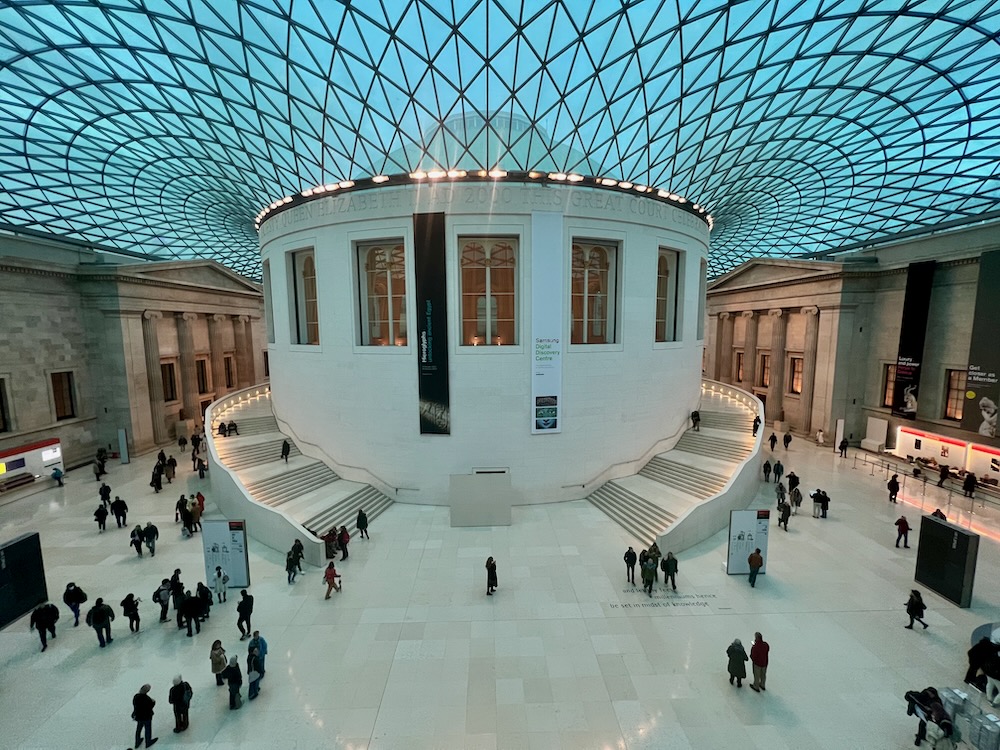 The Great Court at the British Museum in London. Photo Credit: © Ursula Petula Barzey.
The Great Court at the British Museum in London. Photo Credit: © Ursula Petula Barzey.
History of the British Museum
The British Museum was founded in 1753 and was based on the collection of Sir Hans Sloane, a botanist who made a fortune by introducing drinking chocolate to Britain, together with several libraries which donated their manuscripts to the new Museum. Sloane’s bust can be seen in the Enlightenment Gallery on the ground floor near to a copy of the Rosetta Stone. The original Rosetta Stone is on the other side of the Great Court which was designed by the distinguished architect Norman Foster. The Great Court is the largest enclosed space in Europe and was opened by the late queen in 2000.
The British Museum’s collection has grown in size over 250 years and the Sloane collection was moved to the Museum of Natural History in South Kensington. In 1997 a separate British Library was founded by an Act of Parliament and most of the books in the Museum were moved to a purpose-built site about a mile away in Saint Pancras. When the British Library opened it took with it two copies of the Magna Carta as well as items such as the handwritten lyrics to songs by the Beatles. The British Library can be visited without charge and is used today by scholars. Amongst famous writers who studied and wrote at the original British Museum Reading Room were Karl Marx, Charles Darwin and Mahatma Gandhi.
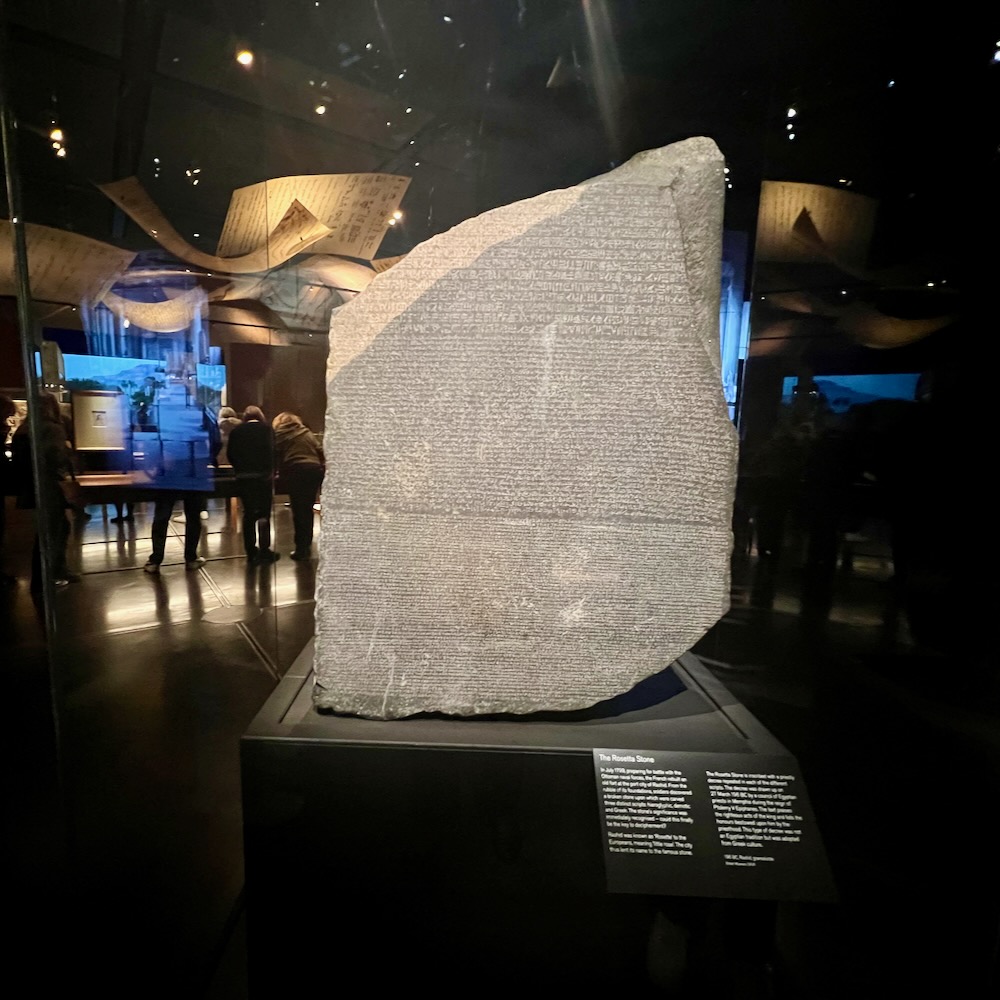 The Rosetta Stone at the British Museum in London. Photo Credit: © Ursula Petula Barzey.
The Rosetta Stone at the British Museum in London. Photo Credit: © Ursula Petula Barzey.
British Museum Controversies
Today the British Museum is beset by scandal as allegations of 1800 missing items, mostly coins and medals, have surfaced. Many of these appear to have been stolen, possibly as part of an ‘inside job’ by those entrusted with looking after the Museum’s collection of eight million objects, only a small proportion of which are on display. The BBC has aired a series of radio programmes that have examined the accusations made against Museum staff and director Hartwig Fischer resigned in mid 2023. He has been replaced by Nicholas Cullinan but, as a temporary measure, Sir Mark Jones was installed as Museum chief. (He is to be succeeded by Cullinan in due course.) There is no suggestion that Fischer was personally guilty of wrongdoing but he felt that he had not guarded the Museum’s integrity and reputation well enough in the face of allegations of theft of items from it.
Some items in the British Museum’s collection are genuinely British and were acquired legally. These include the Lewis Chessmen, which were originally made in, it is believed, Scandinavia and were found buried on the Isle of Lewis off the coast or Scotland. They are believed to have inspired the chess figures used in a Harry Potter film. Other British treasures on display include the body of a man known as Pete Marsh. He was garrotted near Manchester and his remains were discovered in a peat bog nearby. Also on display nearby are treasures from Sutton Hoo in Norfolk which were discovered by amateur archaeologist Basil Brown, whose work was dramatised in the film The Dig. These treasures were donated to the Museum by Edith Pretty, the owner of the land where they were found.
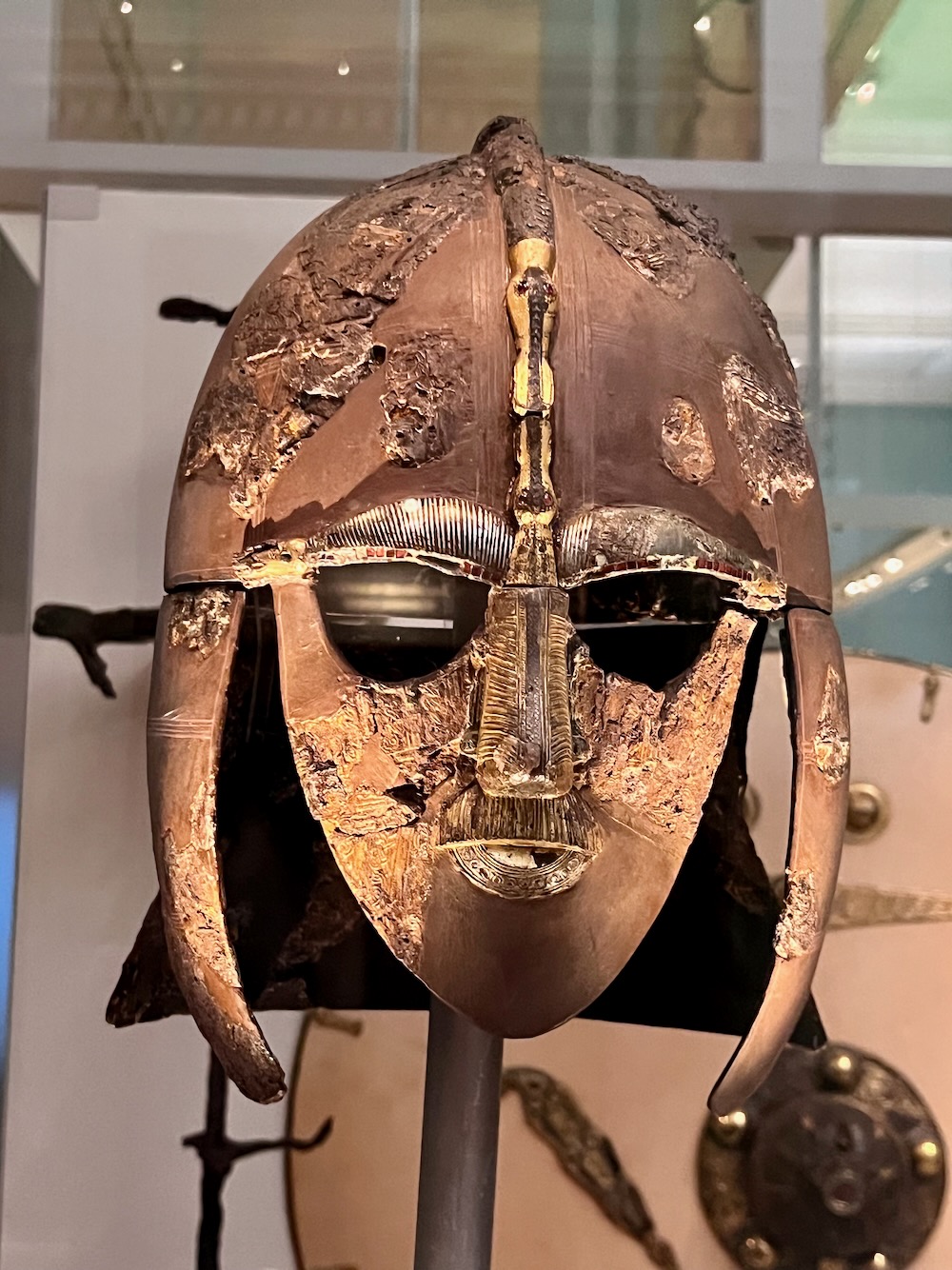 Original Sutton Hoo Helmet at British Museum. Photo Credit: © Ursula Petula Barzey.
Original Sutton Hoo Helmet at British Museum. Photo Credit: © Ursula Petula Barzey.
The British Museum remains in robust health and has recently launched a competition to develop a design for its Western Range. The winner will be announced in early 2025 and the new buildings will make up the Museum’s biggest building project since the 1820s when work commenced on the original quadrangle. The Museum currently covers nearly a million square feet (92,000 square metres) and has ninety four galleries and two miles (3.2 kilometres) of exhibition space. It does not charge for entry. An institution like the British Museum will always attract criticism and controversy but, despite the demands of countries for the return of their treasures and allegations of thefts by Museum staff, the British Museum remains a must-see attraction for those coming to visit London.
However, the British Museum faces another problem now that Turkey has said that Lord Elgin did not have permission to take the Marbles that were formerly named after him from the Acropolis. In a move that Athens has described as ‘hugely significant’ the Turkish government has said that they have not been able to find any evidence that he had been granted the right to remove them when he was ambassador to the Ottoman Court 200 years ago.



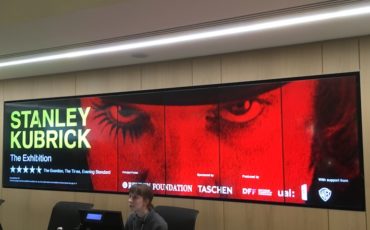
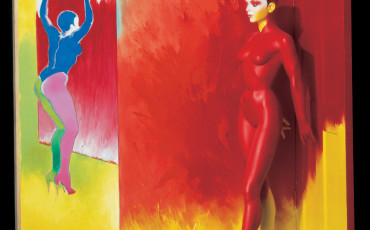

Leave a Reply